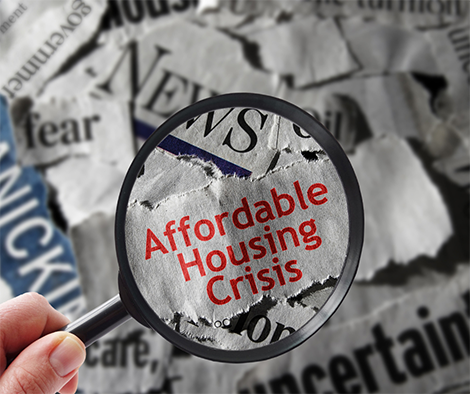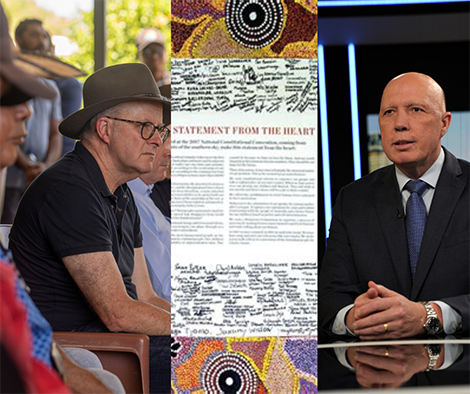Housing affordability and homelessness continue to be major social justice and human rights issues, especially in Australia’s major cities, and although more ambitious than previous federal governments, the statistics show that the Albanese Government must make a bigger commitment to this basic human need if it is serious about solving the housing crisis.

By Jackie Pearson
According to corporate media reports, confirmed by the Everybody’s Home alliance, almost 7000 homes across Australia will soon cease to be part of the former Rudd Government’s National Rental Affordability Scheme (NRAS).
The scheme was thrown out by the Abbott Government, in the 2014 horror budget, which axed many socially progressive programs and replaced them with a punitive philosophy of austerity towards anyone at the bottom of the socio-economic ladder.
According to the Department of Social Services (DSS) website, the NRAS aimed to “increase the supply of affordable rental dwellings. NRAS, which commenced in 2008, provides an annual financial incentive for up to 10 years to approved participants who rent dwellings to eligible people on low to moderate incomes at a rate at least 20 percent below market rent.
NRAS dwellings are not social housing – they are affordable private rental homes.”
The scheme will cease to exist in 2026 and the Albanese Government has given no indication of reversing the 2014 decision to terminate it or of replacing it with something new.
Since coming to power in May 2022, the Albanese Labor Government has categorically stated that fixing housing affordability is one of its prime objectives.
The state-by-state financial stress maps on the Everybody’s Home website indicate how much work the Federal Government must do to at least reduce the number of people currently experiencing rental stress.
According to the maps, the states/territories with the lowest percentages of people experiencing rental stress are Tasmania and the Northern Territory. New South Wales has the highest percentages of rental stress in the country where nine federal electorates have rental stress levels of 69 percent or higher.
The highest is 76.5 percent in the electorate of Macarthur in Sydney’s south-west. That’s more than three in every four rental households in that electorate experiencing rental stress.
Last July, the Minister for Housing and Homelessness, Julie Collins, held her first meeting with state and territory housing ministers. Following the meeting, Minister Collins said Ministers were committed to working collaboratively across all levels of government.
She reiterated that the Albanese Government’s housing reform agenda consisted of a $10 billion Housing Australia Future Fund to build 30,000 social and affordable housing properties in five years; a Help to Buy scheme; a Regional First Home Buyer Support Scheme; a National Housing Supply and Affordability Council; and a new National Housing and Homelessness Plan.
Everybody’s Home has argued that 30,000 new social and affordable homes in five years doesn’t meet the mark. It wants 25,000 new socialor public houses built each year.
It has campaigned for an increase to and expansion of Commonwealth Rent Assistance.
In December the alliance quoted statistics from the most recent Homelessness Monitor from Launch Housing to highlight that housing stress was the fastest growing cause of homelessness in Australia. The number of people seeking assistance from homelessness services had grown by 27 percent in the past four years.
Homelessness is outpacing population growth, Everybody’s Home reported.
Minister Collins marked National Homelessness Week in August 2022 by announcing a new National Housing and Homelessness Plan. It was a repeat of the July announcement.
In September, following the Jobs and Skills Summit, the Labor Government found another $575 million for social and affordable housing to support its 30,000 houses in five years commitment.
The idea is to partner with State and Local Government and private sector social housing providers and use $575 million of “underutilised” funds from the existing $1 billion National Housing Affordability Facility.
Housing and Homelessness Ministers met again in September to talk about the need for data and the Productivity Commission released its review of the National Housing and Homelessness Agreement (which The Point will report on soon).
By the end of October the total number of new social and affordable homes being promised by Minister Collins and Prime Minister Albanese had been bumped up to 40,000 a new Housing Accord included a $350 million investment over five years, but not starting until 2024-25, would pay for the additional 10,000 homes.
The formation of Housing Australia, a new National Housing Supply and Affordability Council, was announced to oversee key pillars of the Albanese Government’s housing and homelessness strategy, described as the most ambitious in over 20 years.
In December, the government created a Housing and Homelessness Ministerial Council, and it will prepare a report and work plan for presentation to the National Cabinet on January 23.
So far in the new year Minister Collins has announced a $70 million build to rent project on the Adelaide fringe that will include between 30 and 50 social housing properties with income-based rent out of the 130 apartments built.
In March 2022, CEO of SACOSS, Ross Womersley told The Point the minimum investment needed by the state government to fix the shortfall of social housing in SA was $145 billion over four years. The South Australian Labor Government pledged $180 million.
Most Australians know someone who is struggling to pay the rent – tradespeople in major cities, students, older single women, single parent families. Have you talked to your local government representatives and state and federal MPs about this issue? They can be contacted via email or social media or you can give them a call.
Everybody’s Home has a petition for Treasurer Jim Chalmers asking for the Albanese Government to commit to building 25,000 social homes per year. That’s the level of investment required to stop housing stress.
The AUKUS submarines could cost the Australian taxpayer $171 billion. The government’s current “ambitious” core spending on social and affordable housing is around $11 billion. It’s all a matter of priorities.



Spot on Jackie. A lack of a roof over families is a real measure of our society. Decades past during the Depression people simply built mud cottages in the bush with bag and whitewash walls and dirt floors. I remember seeing them years later still intact.in the 1950’s. Others did not discriminate against those families who sent their kids to the local school etc. If you were to try to do the same in an area within a local forest now the authorities would come down hard. Our laws have developed not to tolerate fringe dwellers regardless of their dire situations or protection of children.
Secondly. All of the “industrial pockets” of land on the Coast have buildings and outside areas that are not used or left to semi-ruin. They have all town services at hand. How about allowing some redevelopment of those spaces to create living environments to advantage both homeseekers and small business in that complex, meaning that they are under 24 hour usage which would also deter intrusion and vandalism at the same time. All plusses here.! Cheers Mike and Lyn